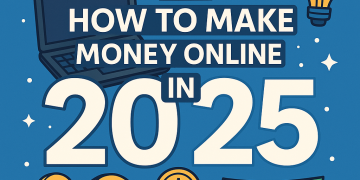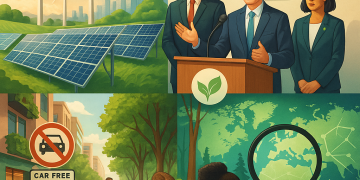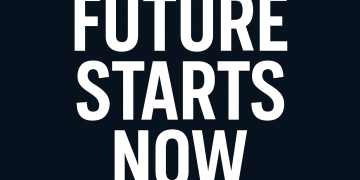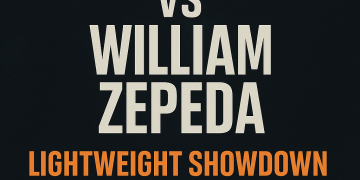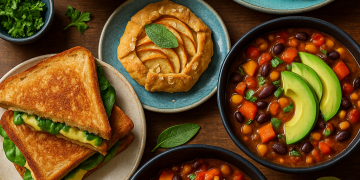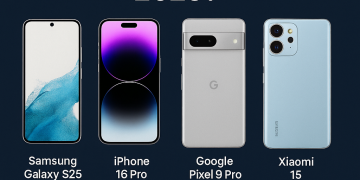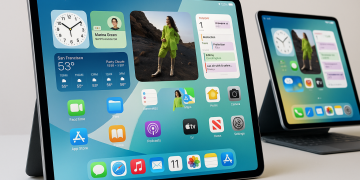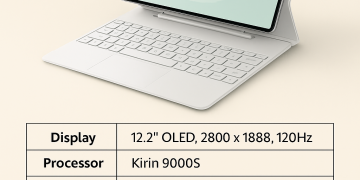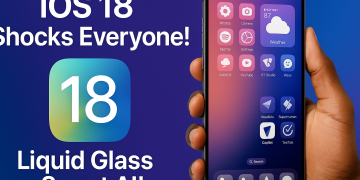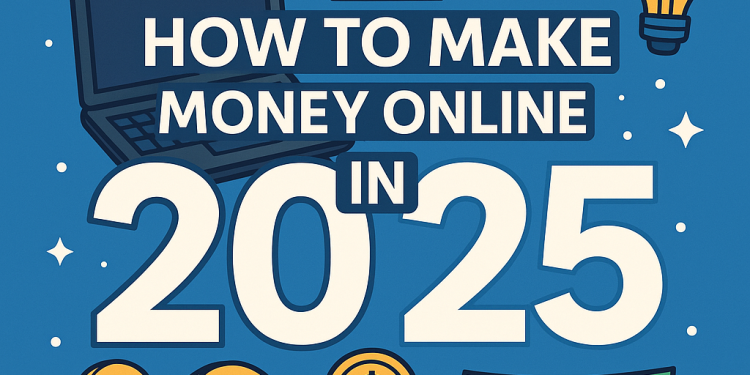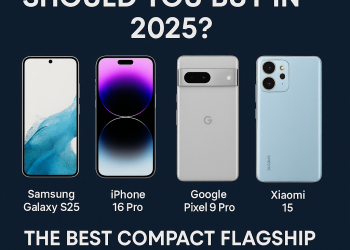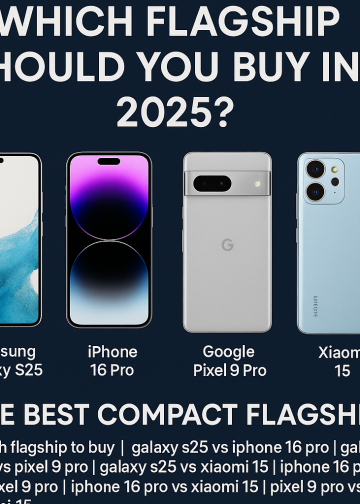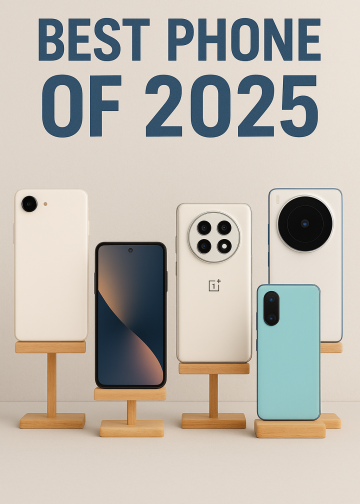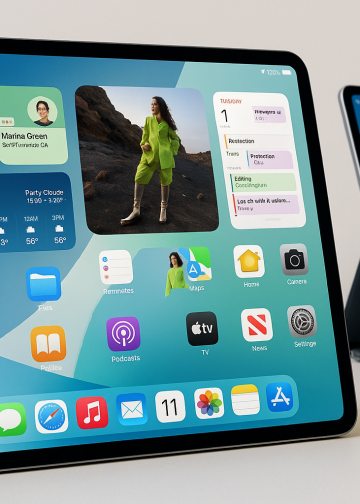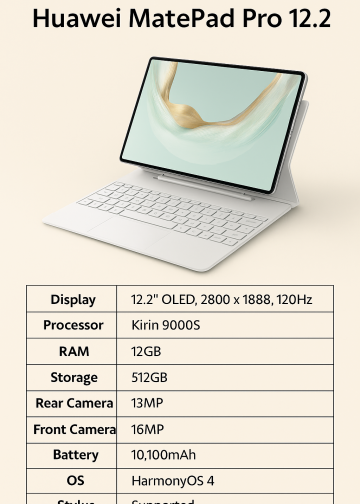In a world where remote work is no longer a luxury but a necessity, the opportunities to make money online have expanded far beyond simple blogging or YouTube ads. As of 2025, the digital economy has matured into a sophisticated ecosystem where practically anyone with an internet connection can carve out a profitable niche. This article breaks down the most effective online income strategies, categorizing them into accessible, sustainable, and scalable models. If you’re serious about generating real income online, here’s your roadmap.
—
### 1. The Four Pillars of Online Income
Before diving into specifics, it’s essential to understand that online business models tend to fall under four broad categories:
– **Selling Services**
– **Monetizing Attention**
– **Selling Knowledge or Tools**
– **Selling Physical or Digital Products**
Each of these has its own pros, cons, and startup requirements. Your background, skill set, and resources will determine the best entry point for you. Understanding which pillar fits your strengths is the first step to long-term online income.
—
### 2. Selling Your Skills: The Most Accessible Model
If you’re starting from scratch with no capital, no product, and no audience, your most viable option is selling services. This model requires minimal overhead and offers immediate opportunities. It’s the go-to path for freelancers, consultants, and digital nomads.
#### What Skills Are in Demand?
– Video editing for creators and marketers
– Email copywriting for ecommerce and SaaS brands
– Website development with platforms like WordPress or Webflow
– Social media management for local businesses and influencers
– Ad campaign setup with tools like Facebook Ads Manager or Google Ads
– Translation for global content distribution
– Automation scripting for workflows and business operations
These skills can be self-taught using the vast library of free tutorials available on platforms like YouTube, Coursera, or Skillshare. Many successful freelancers began with nothing more than a laptop and curiosity.
#### Where to Sell Your Skills
– **Freelance Marketplaces**: Sites like Fiverr, Upwork, and Freelancer allow you to list your services and build a portfolio. Focus on a clear value proposition and deliver fast, high-quality results.
– **Cold Outreach**: Reach out directly to local businesses or content creators with tailored proposals. Demonstrate value with mini audits or mockups.
– **Online Communities**: Join relevant Reddit threads, Facebook groups, and Slack channels where people actively seek skilled freelancers. Participate, share tips, and engage meaningfully.
#### Getting Clients
Start by offering lower-priced services in exchange for reviews or testimonials. Once you’ve built credibility, raise your rates accordingly. Referrals are golden—delight your early clients and ask them to spread the word.
#### Tools for Freelancers
– **Trello/Asana** for task management
– **Loom** for personalized video pitches
– **Canva** for quick design jobs
– **Grammarly** to elevate written communication
—
### 3. Monetizing Attention: Build First, Monetize Later
If you’re comfortable being in front of a camera—or know how to create engaging content anonymously—building an audience can be extremely lucrative. In 2025, creators are some of the highest earners in the digital world.
#### Popular Platforms to Build Attention
– **YouTube** for long-form video tutorials, storytelling, or reviews
– **TikTok** for short, viral content
– **Instagram** for visual branding and lifestyle content
– **Twitch** for live gaming, commentary, or entertainment
The monetization model here is simple: **capture attention, then monetize it.**
#### Income Streams from Attention
– **Ad Revenue**: Platforms like YouTube offer AdSense income based on CPM (cost per 1,000 views). Finance, health, and tech niches earn the most.
– **Brand Sponsorships**: Companies pay for shoutouts, integrations, or product placements. Rates depend on engagement and niche alignment.
– **Affiliate Marketing**: Promote products and earn a commission per sale. Tools like Amazon Associates, Impact, and ShareASale are popular.
– **Merch & Subscriptions**: Platforms like Patreon or Substack offer recurring income. Let fans support your work directly.
#### Real Talk on Monetization
While platforms like YouTube pay fairly well for ads, others like Instagram or TikTok offer little to no direct ad revenue. Success often comes down to diversifying income streams. Influencers often supplement their income with e-books, webinars, or speaking gigs.
#### Tools to Grow an Audience
– **TubeBuddy/VidIQ** for YouTube optimization
– **Later/Planoly** for Instagram scheduling
– **Beehiiv** or **ConvertKit** to build an email list
—
### 4. Selling Knowledge or Tools
If you have expertise in a specific field, monetizing your knowledge can be highly scalable. This model doesn’t rely on physical products or direct client work, giving you leverage over time.
#### Examples of Knowledge-Based Products
– **Online Courses**: Teach what you know using platforms like Teachable or Kajabi
– **Ebooks and Digital Workbooks**: Ideal for guides, strategies, or frameworks
– **Templates**: Notion, Excel, Figma, or resume templates
– **Memberships**: Offer exclusive access to content or community
– **Coaching**: 1-on-1 or group sessions via Zoom or Circle
#### Case Study (Anonymous)
One productivity expert created a digital Notion planner and sold it to their YouTube audience. In under a year, they grossed over $100,000 with minimal ad spend.
#### Selling Tools (for Tech-Savvy Creators)
– **Micro SaaS**: Small software tools solving niche problems
– **Databases**: Curated directories or search tools
– **Chrome Extensions**: Simple utility plugins
You can hire developers if you don’t code—what matters is the idea and execution.
—
### 5. Product-Based Models
For those with upfront capital or e-commerce knowledge, selling physical or digital products can provide a high ceiling for growth.
#### Popular Business Models
– **Print on Demand**: Platforms like Printify or Printful handle printing and shipping. Just upload your design.
– **Amazon FBA**: Fulfilled by Amazon. Requires capital, product research, and supplier coordination.
– **DTC (Direct to Consumer)**: Build your own brand and website using Shopify or WooCommerce.
#### Steps to Start
1. Identify a niche and validate demand.
2. Design or source your product.
3. Build a brand and visual identity.
4. Launch and optimize your storefront.
5. Run paid ads, partner with influencers, and gather reviews.
#### What to Watch Out For
– **Inventory Risk**: Order minimums can tie up your capital
– **Ad Costs**: Facebook and Google ads are competitive
– **Customer Service**: Outsource early to stay sane
—
### 6. The Value of Niching Down
In 2025, the online space is more crowded than ever. The easiest way to stand out is to go deep, not wide. A well-defined niche gives you better targeting, clearer messaging, and stronger word-of-mouth.
#### How to Define a Niche
Start by defining your audience — maybe it’s busy moms or remote developers.
Next, identify the specific problem they face, such as staying fit at home or boosting focus.
Finally, clarify the transformation you promise—like helping them lose 10 pounds or double their productivity.#### Niches with High Demand
– Sustainable living
– Digital organization
– Language learning
– Home-based side hustles
– AI tools and productivity
—
### 7. Leveraging Tools for Automation
Once you start earning, time becomes your bottleneck. Automate repetitive tasks using tools like:
– Zapier: Link apps and trigger workflows automatically
– Canva: Quick design for posts, thumbnails, and documents
– ChatGPT: Draft emails, video scripts, and product descriptions
– Calendly: Schedule client calls without back-and-forth
– Notion: Manage content calendar and project tracking
The goal is to work on your business, not just in it.
—
### 8. Tips to Stay Ahead
– Track Trends: Use Google Trends, Exploding Topics, and TikTok to stay current
– Invest in Learning: Set aside time or budget for quarterly upskilling
– Build Systems: Standard operating procedures make scaling easier
– Network Intentionally: Virtual summits, masterminds, and niche Discord groups are goldmines for partnerships
– Document Your Journey: Share what you’re learning to attract an audience and gain trust
—
### 9. The Realistic Timeline
Let’s be honest—success doesn’t happen overnight. But with consistent effort:
– Month 1–3: Learn a skill, publish content, get your first client
– Month 4–6: Build a reputation, raise rates, launch a product
– Month 7–12: Scale offers, automate tasks, grow your audience
– Year 2+: Consider hiring, launching second offers, or going full-time
Every creator’s journey is different. The key is to stay committed and track progress.
—
### 10. Final Thoughts
The internet isn’t a magic money machine. But it is the most powerful opportunity engine of our time. Whether you’re a student, a stay-at-home parent, or a full-time employee, you can build a stream of online income that changes your life.
Choose your path. Learn deliberately. Start messy. And don’t stop until you own your time.
In 2025 and beyond, the people who win online aren’t necessarily the smartest or the richest—they’re the most consistent. Let that be you.
## How People Actually Make Money Online in 2025
[… Existing Content from 1 to 10 …]
### 11. Case Studies: Real People, Real Results
Sometimes, the best way to understand an opportunity is by seeing how others have succeeded. Below are anonymized examples of how people from different walks of life started earning money online.
#### Case Study 1: The Stay-at-Home Parent Turned Freelance Copywriter
After losing her corporate job in early 2020, Sarah decided to explore freelancing while caring for her children. She took a free online course in copywriting, built a simple portfolio using Google Docs, and landed her first gig on Upwork within a month. Two years later, she earns over $5,000/month from a mix of retainer clients and eBook projects.
#### Case Study 2: The Gamer Who Built a Twitch Empire
Mike loved playing video games but never thought it could be a career. He started streaming his gameplay in 2022, focusing on indie games. By 2024, his channel had over 50,000 followers. He earns from Twitch subs, affiliate links, and sponsorships. His key takeaway: consistency and community.
#### Case Study 3: The High Schooler Selling Templates
Lena, a 17-year-old high school student, started selling Notion templates on Gumroad after building her own planner for school. She posted short TikToks showcasing her designs. Within six months, she had made $8,000 and developed her own personal brand.
—
### 12. How to Launch a YouTube Channel That Grows
YouTube remains one of the most powerful ways to build an audience and income. Here’s a streamlined action plan:
#### Step 1: Define Your Niche
Pick a specific topic where you can provide consistent, useful content (e.g., productivity, tech reviews, language learning).
#### Step 2: Plan 10 Video Ideas
Structure your content as searchable or “evergreen.” Use tools like TubeBuddy to validate keywords.
#### Step 3: Script and Record
Use tools like Descript or Notion for writing scripts. Film on your phone or camera — perfection is not required early on.
#### Step 4: Edit and Publish
Use CapCut, iMovie, or DaVinci Resolve. Create a simple thumbnail using Canva. Publish with SEO in mind.
#### Step 5: Promote and Engage
Share your videos in Reddit threads, Discord communities, and on email newsletters. Respond to every comment to build early traction.
—
### 13. How to Launch a Digital Product in 30 Days
Selling digital products like templates, guides, or printables is a great way to earn passive income.
#### Week 1: Research
Find underserved needs in your niche using Reddit, Quora, or AnswerThePublic.
#### Week 2: Create
Use tools like Canva, Notion, or Google Sheets to build your product. Focus on simplicity and usability.
#### Week 3: Build a Landing Page
Use Gumroad, Payhip, or Carrd to create a landing page with testimonials or benefits clearly listed.
#### Week 4: Promote
Use Twitter threads, TikTok breakdowns, or blog posts to drive interest. Partner with micro-influencers in your niche.
—
### 14. A 12-Month Roadmap to Go Full-Time
Here’s a realistic 12-month timeline to go from zero to sustainable online income:
– **Month 1–2**: Learn and choose one model. Start freelancing or content creation.
– **Month 3–4**: Earn your first $500. Reinvest into tools, courses, or ads.
– **Month 5–6**: Launch your first product (ebook, template, course).
– **Month 7–8**: Optimize systems, create a personal brand, improve outreach.
– **Month 9–10**: Scale income past $1,000/month via multiple sources.
– **Month 11–12**: Create sustainable workflows. Go part-time or full-time if possible.
—
### 15. Mindset Shifts That Guarantee Success
Tools and platforms change — but mindset wins long-term.
– **From Consumer to Creator**: Spend less time scrolling, more time publishing.
– **From Employee to Entrepreneur**: You don’t need permission to launch. Just start.
– **From Perfect to Consistent**: Daily action beats monthly inspiration.
– **From Scarcity to Abundance**: There’s room for everyone. You just need to show up.
—
### Final Note
Whether you start with a smartphone, a laptop, or just an idea, 2025 offers more tools, more access, and more potential than ever before.
Start with what you have. Grow with intention. The best time to begin was yesterday. The second-best time is now.
### 16. Building a Personal Brand That Attracts Opportunities
Your personal brand is your digital reputation. It’s what people find when they Google your name, visit your social profiles, or land on your website. In the online economy, your brand can open doors—or close them.
#### What Makes a Personal Brand Stand Out?
– **Authenticity**: People connect with real, imperfect stories.
– **Consistency**: Use the same photo, bio, and tone across platforms.
– **Clarity**: Your niche, mission, and offer should be immediately understandable.
– **Content**: Valuable posts position you as an expert in your niche.
Whether you’re freelancing, coaching, or building a YouTube channel, your personal brand compounds over time. Document your process, share wins and lessons, and use content as leverage.
—
### 17. Using AI to Multiply Your Output (Without Losing Your Voice)
AI tools are no longer optional—they’re essential allies for solo creators and entrepreneurs. In 2025, those who master AI will outpace competitors in efficiency and output.
#### High-Impact AI Use Cases
– **ChatGPT**: Draft content, brainstorm ideas, write emails or captions
– **Notion AI**: Summarize research, reformat long notes, build project plans
– **Descript**: Auto-transcribe, edit podcasts or videos using text
– **Jasper.ai**: Marketing copy tailored for different platforms
– **Pictory**: Turn blog posts into videos using AI voiceover and stock clips
The key is to use AI to enhance—not replace—your creativity. Inject your voice, personality, and insights into everything.
—
### 18. 5 Free Traffic Strategies That Still Work in 2025
You don’t need to spend money on ads to start driving traffic. These organic strategies still deliver massive ROI:
1. **SEO Blogging**: Write helpful articles around long-tail keywords. Use tools like Ubersuggest or LowFruits for keyword ideas.
2. **YouTube SEO**: Title your videos with search intent in mind. Answer questions your audience is Googling.
3. **Pinterest Pins**: Still powerful for visual niches like food, design, DIY, and travel.
4. **Reddit Contributions**: Add real value in subreddits. Link to your content only when relevant.
5. **Quora Answers**: Establish authority by answering niche questions and subtly linking to your site or offer.
Focus on one channel first, master it, and expand later.
—
### Final Encouragement
You don’t need a perfect plan. You need momentum. Choose one income model, commit to showing up weekly, and compound your efforts. In 12 months, your future self will thank you.
### 19. Building a Real Passive Income System
The dream of making money while you sleep is achievable—but it requires up-front effort and smart systems. Passive income isn’t truly passive in the beginning. You build, test, and refine systems that later generate income with minimal input.
#### The Three Layers of Passive Income
1. **Foundational Asset**: This could be a digital product (like a course, eBook, or template), a blog, or a YouTube channel. The key is that it continues to provide value over time.
2. **Traffic Engine**: You need consistent visitors. SEO, Pinterest, YouTube, or email marketing can fuel this engine without daily effort.
3. **Conversion Pathway**: This includes lead magnets, automated email sequences, and optimized sales pages. The goal is to turn visitors into buyers while you sleep.
#### Example System in Action
– A productivity coach builds a Notion template.
– She writes a blog post titled “10 Ways to Organize Your Life in Notion.”
– Visitors find it through Google search.
– They download a free version and join her email list.
– An automated sequence introduces her premium offer.
– Sales trickle in daily with zero manual outreach.
#### Tools to Set It and Forget It
– **ConvertKit / Beehiiv**: Email automation
– **Gumroad / Podia**: Product hosting with auto-delivery
– **Teachable / Kajabi**: Full course platforms with built-in marketing
– **Google Analytics / Hotjar**: Track how visitors interact with your sales funnel
#### Why Most People Fail at Passive Income
– They expect overnight results
– They skip validation and build products no one wants
– They don’t drive consistent traffic
The key? **Solve a real problem**, package it simply, and distribute it widely. Then optimize.
—
### Final Call to Action
The internet isn’t just a tool—it’s a gateway. If you commit to building something meaningful, stay consistent, and iterate based on feedback, you will succeed.
You have the tools. You have the access. Now all you need is the momentum.
Let 2025 be the year you stopped watching and started building.
—
### 20. The 90-Day Online Income Challenge
If you’re feeling overwhelmed by the options, start with this simple 90-day plan. It’s designed for action-takers and dreamers alike—whether you’re a student, a stay-at-home parent, or someone looking to escape the 9–5.
#### Month 1: Foundation
– Choose a niche you’re passionate about or skilled in.
– Learn a valuable skill using YouTube, Coursera, or LinkedIn Learning.
– Create one piece of content weekly (a blog post, a YouTube video, or a LinkedIn post).
– Reach out to 10 potential clients or collaborators.
#### Month 2: Creation
– Package your skill into a service or digital product.
– Build a simple landing page using Carrd or Notion.
– Set up a basic email list using Beehiiv or ConvertKit.
– Ask for testimonials and gather feedback.
#### Month 3: Distribution
– Promote your offer daily using free platforms (Reddit, Quora, Facebook groups).
– Record short-form videos to drive traffic (TikTok, Reels, YouTube Shorts).
– Automate your first email funnel.
– Track your wins, failures, and traffic sources.
#### What to Expect
– $0 to $500 is a realistic milestone in 90 days.
– You’ll learn more by doing than reading.
– Confidence grows with every message sent and product published.
—
### The Real Win
Success online isn’t just about money—it’s about freedom. The freedom to work from anywhere, say yes to your goals, and design a lifestyle that fits your values.
So take the leap. Hit publish. Make the call. Post the reel. Send the pitch.
Because on the other side of your effort… is proof that it works.
Welcome to the new economy—where your potential is uncapped, and your time is your own.

